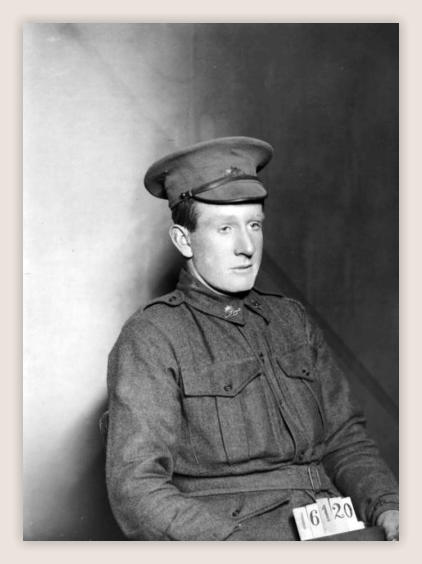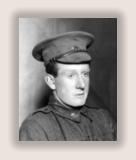Their bodies are buried in peace; but their names liveth for evermore.
Their Duty Done
A tribute to the men and women of the East Gippsland Region who Died
as a result of their participation in World War One : 1914 -1919



1604 Corporal Henry Edwin Thomas - Omeo
Killed in Action 15 October 1917
Henry Thomas was ten years old when his little sister Gladys was born at Omeo in 1901.
His parents, Stephen and Laura, had moved him and his siblings Sylvia and Arthur
from Narioka to Omeo, sometime in 1900. It was here that Henry attended school and
the family were in the district until at least 1913.
Once he completed his education Henry started work as a shop assistant and in
1916, when he was 25 years old, he enlisted on the 17 March with the 33
rd
Infantry. He
embarked on the Marathon in May 1916 and landed in England in July. After several
months of training in England, he proceeded to France in November 1916. On 24
February he was wounded in action receiving gunshot wounds to the face, skull and
shoulder with secondary abrasions to the right eye.
Because of the severity of his injuries he was transferred several times until
returning to England for treatment and recovery. It wasn’t until he arrived in England
that he was diagnosed with a fracture to the base of the skull.
His family were advised of his “dangerous injuries” but little news was
forthcoming. On 9 March they wrote to the Department seeking information as the last
they had heard nothing and feared the worse. It was a long road to recovery and not
until the end of August, some six months later, that he returned to his unit and fighting
at the frontline.
Henry was in No. 2 section of 9
th
Platoon, C Company which had gone in to hold
the line at Passchendaele on 12 October 1917. They were doing this effectively until the
evening of the 15 October when his company went out to consolidate a strong post. They
proceeded up a cutting which the Germans were shelling heavily when a 9.2 shell
landed between Henry and another man killing them both instantly. The battalion held
the line until 18 October when they lost it and Henry’s body was never recovered. When
Corporal Coppock informed the authorities of the circumstances of Henry’s death he
added that he was well liked by everyone.
Twelve months later his mother wrote to the authorities thanking them for the
belongings that were returned, namely his pocket book and photographs, but asked
what had become of his illuminated wristlet watch with his name inscribed, fountain
pen with gold band containing his name and gold cross. She was told that not all
belongings were necessarily returned in the one parcel and that any other items would
be forwarded in due course. There were no more parcels. The full details of deaths were
never disclosed to families and as it is more than likely that his watch was on his arm,
his pen may have been in his pocket and the gold cross around his neck, these items
probably laid with him in his unmarked grave.
It was an ongoing torment for his mother. In 1923, she wrote how she had met
some people who have received a photograph of their dear one’s grave but to date we
have not received one of our sons. Laura Thomas received a letter in response that
indicated the memorialisation that would be built years later.
The authorities regretted to advise no photographs have been received, and the
only burial report is that he was buried in the vicinity of Passchendaele, and as that
locality was subject to very heavy fighting during September and October, 1917, it is
quite possible that all traces of his resting place were obliterated by shell fire. Failing
the recovery and identification of the actual remains, it is the intention of the
authorities to perpetuate the memory of those fallen by means of collective memorials,
on which the soldier’s full regimental description and date of death will be inscribed.
These monuments will be erected in certain defined battle areas in France and
Belgium, in commemoration of those who fell in the neighbourhood and for whom no
actual graves have been identified.
It was another four years before the Menin Gate memorial was unveiled in 1927
where Henry Thomas is remembered.
….. his resting place was obliterated by shell fire









